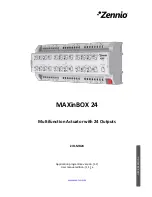
89
must be a string of 1 to 63 characters that contains no blank space, for example, aabbcc. A password
in cipher text must be a string of 24 or 88 characters, for example, _(TT8F]Y\5SQ=^Q`MAF4<1!!.
Description
Use the
password
command to configure a password for a local user and specify whether to display the
password in cipher text or plain text.
Use the
undo password
command to delete the password of a local user.
With no keyword or argument specified, the command prompts you to provide a password, and the
password will be displayed in plain text. This interactive mode is supported only on devices that support
the password control feature. Support for the feature depends on the device model. For more information
about password control commands, see
Security Command Reference
.
With the
cipher
keyword specified, a password of up to 16 characters in plain text is encrypted into a
password of 24 characters in cipher text, and a password of 16 to 63 characters in plain text is encrypted
into a password of 88 characters in cipher text. For a password of 24 characters, if the system can
decrypt the password, the system treats it as a password in cipher text. Otherwise, the system treats it as
a password in plain text.
Related commands:
display local-user
and
local-user password-display-mode
.
Examples
# Set the password of local user
user1
to 123456 and set the display mode to plain text.
<Sysname> system-view
[Sysname] local-user user1
[Sysname-luser-user1] password simple 123456
service-type
Syntax
service-type
{
ftp
|
lan-access
| {
ssh
|
telnet
|
terminal
} * |
portal
|
ppp
}
undo service-type
{
ftp
|
lan-access
| {
ssh
|
telnet
|
terminal
} * |
portal
|
ppp
}
View
Local user view
Default level
3: Manage level
Parameters
ftp
: Authorizes the user to use the FTP service. The user can use the root directory of the FTP server by
default.
lan-access
: Authorizes the user to use the LAN access service. Such users are mainly Ethernet users, for
example, 802.1X users.
ssh
: Authorizes the user to use the SSH service..
telnet
: Authorizes the user to use the Telnet service.
terminal
: Authorizes the user to use the terminal service, allowing the user to login from the console or
AUX port.
portal
: Authorizes the user to use the Portal service.
ppp
: Authorizes the user to use the PPP service. .
















































